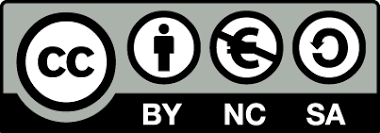บทคัดย่อ
โครงการพัฒนาชุดสิทธิประโยชน์ในระบบหลักประกันสุขภาพแห่งชาติ (universal coverage benefit package: UCBP) เป็นกลไกสำคัญที่ช่วยให้ประชาชนสามารถเข้าถึงบริการสุขภาพที่จำเป็นได้อย่างครอบคลุมและเท่าเทียม โดยมีสำนักงานหลักประกันสุขภาพแห่งชาติ (สปสช.) และมูลนิธิเพื่อการประเมินเทคโนโลยีและนโยบายด้านสุขภาพ (HITAP) ดำเนินงานร่วมกันตลอดกระบวนการ ตั้งแต่การเสนอหัวข้อ การจัดลำดับความสำคัญ การศึกษาวิจัย ไปจนถึงการพัฒนานโยบายด้านสุขภาพ โดยยึดหลักความเป็นระบบ ความโปร่งใส การมีส่วนร่วมจากทุกภาคส่วน และการใช้ข้อมูลเชิงประจักษ์ในการตัดสินใจ งานวิจัยฉบับนี้มีวัตถุประสงค์เพื่อทบทวนวรรณกรรมแบบเร่งกระบวนการ (rapid review) เพื่อสนับสนุนการพิจารณาการเพิ่มหรือปรับปรุงชุดสิทธิประโยชน์ภายใต้ระบบหลักประกันสุขภาพแห่งชาติ โดยเน้นการวิเคราะห์ข้อมูลทางคลินิกที่เกี่ยวข้องกับประสิทธิผลและความปลอดภัย และการประมาณการงบประมาณของการนำเทคโนโลยีมาใช้ในระบบสุขภาพ ทั้งนี้หัวข้อวิจัยทั้ง 3 เรื่องในรายงานฉบับนี้เป็นหัวข้อที่ได้รับการเสนอเข้าสู่กระบวนการ UCBP ปี พ.ศ. 2568 ได้แก่ เรื่องที่ 1 การตรวจคัดกรองและวินิจฉัยไวรัสตับอักเสบซีด้วย Hepatitis C virus (HCV) duo test เรื่องที่ 2 การเพิ่มสิทธิประโยชน์ให้แถบตรวจน้ำตาลในเลือดสำหรับผู้ป่วยเบาหวานชนิดที่ 2 (type 2 diabetes mellitus: T2DM) และเรื่องที่ 3 การใช้เครื่องวัดออกซิเจนในเลือด (pulse oximeter: PO) ที่บ้านสำหรับผู้ป่วยโรคหัวใจพิการแต่กำเนิดชนิดเขียว (Cyanotic Congenital Heart Disease: CCHD) ผลการทบทวนวรรณกรรมแบบเร่งกระบวนการของ HCV duo test (เรื่องที่ 1) ผลการศึกษาพบว่าเป็นเครื่องมือคัดกรองที่มีความแม่นยำสูง สามารถตรวจหาได้ทั้งแอนติบอดีและแอนติเจนต่อเชื้อไวรัสตับอักเสบซีในคราวเดียว ส่งผลให้ลดปัญหาผู้รับการตรวจไม่กลับมาตรวจยืนยันตามแนวทางการคัดกรองปัจจุบัน แม้ว่าการนำ HCV duo test แบบ one-stop test มาใช้จะก่อให้เกิดค่าใช้จ่ายด้านงบประมาณสูงขึ้นเมื่อเทียบกับแนวทางการคัดกรองที่ใช้อยู่ในปัจจุบัน แต่สามารถเพิ่มโอกาสในการวินิจฉัยผู้ติดเชื้อไวรัสตับอักเสบซีเรื้อรังและนำผู้ป่วยเข้าสู่กระบวนการรักษาได้อย่างเหมาะสม ซึ่งจะช่วยลดค่าใช้จ่ายด้านสาธารณสุขในระยะยาว โดยเฉพาะในกลุ่มประชากรที่มีความชุกของการติดเชื้อไวรัสตับอักเสบซีสูง ส่วนการเพิ่มสิทธิประโยชน์ให้แถบตรวจน้ำตาลในเลือดสำหรับผู้ป่วย T2DM ที่ไม่สามารถควบคุมระดับน้ำตาลได้ หรือมี HbA1c มากกว่าหรือเท่ากับร้อยละ 7.5 (เรื่องที่ 2) ผลการศึกษา พบว่า การตรวจน้ำตาลด้วยตนเอง (self-monitoring of blood glucose: SMBG) อย่างสม่ำเสมออย่างมีแบบแผน สามารถลดระดับ HbA1c ได้อย่างมีนัยสำคัญ โดยเฉพาะเมื่อนำไปใช้ควบคู่กับการปรับเปลี่ยนพฤติกรรม ทั้งยังส่งผลดีต่อการลดภาระค่าใช้จ่ายของระบบสุขภาพในระยะยาวด้วย สำหรับการใช้เครื่อง PO ที่บ้านสำหรับผู้ป่วย CCHD (เรื่องที่ 3) ผลการศึกษา พบว่าแม้การใช้เครื่อง PO แบบพกพาจะมีบทบาทสำคัญในการดูแลผู้ป่วย CCHD โดยเฉพาะในช่วงการระบาดของโควิด-19 ซึ่งมีข้อจำกัดในการเข้าถึงการรักษา แต่จากการทบทวนวรรณกรรมและสอบถามผู้เชี่ยวชาญ ยังพบข้อจำกัดด้านความแม่นยำของอุปกรณ์ และขาดแนวทางการใช้งานที่ชัดเจน อีกทั้งพบปัญหาการหลุดออกจากระบบการติดตามและดูแลรักษาอย่างต่อเนื่องของผู้ป่วย CCHD จึงมีข้อเสนอให้พัฒนาระบบการดูแลผู้ป่วยกลุ่มนี้แบบบูรณาการ แทนการแจกจ่ายอุปกรณ์ให้กับผู้ป่วยโดยตรง ผลการศึกษาทั้งสามเรื่องนี้ถูกนำไปใช้ประกอบการตัดสินใจเชิงนโยบายของ สปสช. โดยพิจารณาร่วมกับข้อมูลด้านประสิทธิผล ความปลอดภัย ประมาณการงบประมาณ และความเหมาะสมกับบริบทของระบบสุขภาพไทย เพื่อให้การเพิ่มหรือปรับปรุงชุดสิทธิประโยชน์ในระบบหลักประกันสุขภาพแห่งชาติเกิดประโยชน์สูงสุดแก่ประชาชน
บทคัดย่อ
The Universal Coverage Benefit Package (UCBP) is a key mechanism that supports
equitable and comprehensive access to essential health services for all Thai citizens. The
National Health Security Office (NHSO), in collaboration with the Health Intervention and
Technology Assessment Program Foundation (HITAP), oversees the UCBP process,
encompassing topic nomination, prioritization, research, and policy development. This process
adheres to principles of systematic processes, transparency, stakeholder participation, and
evidence-informed decision-making. This study was a rapid review to support the
consideration of additions or revisions to the benefit package under the universal coverage
scheme (by focusing on three proposed topics). The review focused on clinical effectiveness,
safety, and budget estimation for three proposed interventions submitted to the UCBP cycle
in 2025 that included: topic 1 on screening and diagnosis of hepatitis C virus (HCV) infection
using the HCV duo test; topic 2 on expansion of benefits for blood glucose test strips for
patients with type 2 diabetes (T2DM); and topic 3 on home-used pulse oximeter (PO) for
patients with cyanotic congenital heart disease (CCHD).
The results of the rapid reviews found that the HCV duo test (topic 1) is a highly
accurate screening tool capable of simultaneously detecting both antibodies and antigens to
HCV, thereby reducing the problem of individuals not returning for confirmatory testing under
the current screening protocol. While the adoption of the HCV duo test as a one-stop testing
strategy would entail higher budgetary expenditure compared to the existing approach, it
offers the potential to improve the identification of individuals with chronic HCV infection and
facilitate timely linkage to treatment. In the long term, this could contribute to reducing
overall healthcare costs, particularly in populations with a high prevalence of HCV infection.
For the expansion of benefits for blood glucose test strips for patients with T2DM who cannot
control their blood sugar levels with HbA1c more than or equal to 7 percent (topic 2), the
review found that regular and structured self-monitoring of blood glucose (SMBG) can
significantly reduce HbA1c levels, especially when combined with behavior modification. It
also has a positive impact on reducing the long-term financial burden related to T2DM of the
healthcare system. For the home-use PO for patients with CCHD (topic 3), although portable
PO devices played an important role in remote care during the COVID-19 pandemic, the review
found limitations in terms of PO’s accuracy for patients with low oxygen levels, the lack of
clear usage guidelines, and challenges with patient retention in ongoing monitoring and care
systems. Therefore, the consultations with stakeholders recommended developing an
integrated care system for CCHD patients instead of solely distributing the PO devices. The
findings from these three topics have been used to support the policy decision-making of the
NHSO, in consideration with data on effectiveness, safety, budget estimation, and the
feasibility within the context of the Thai healthcare system, to ensure that the addition or
revision of benefit items under the UCBP brings the greatest benefit to the Thai population.


